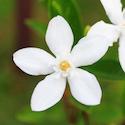The why and the 10 most useful tips for growing jasmines in pots
Jasmine plants are exquisite tropical and subtropical plants with incredibly beautiful flowers which produce a marvelous scent. Jasmines grow as vines following a lattice slowly moving up on it. For that reason, jasmines are commonly planted as hedges around fences where they have a scaffold to follow. This fact means, that jasmines are quite often planted outside in one single location. But can they also be grown in pots instead? This article explores jasmines in pots, the pros and cons.
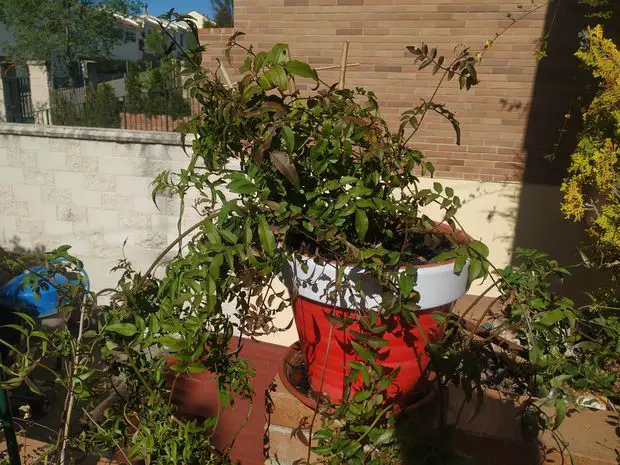
To give it to you straight up: Yes, jasmines can be grown in pots, both outdoors and indoors. Doing so helps us manage challenging conditions because the plant is somewhat mobile. The pot can be moved. There are a couple of things to take into consideration however, such as appropriate pot size, draining capabilities and a support for upward growth. Jasmines are vines after all and need to hold on to something. Also, pots offer limited space for the roots and nutrients, which quickly deplete from the limited soil. We need to stay on top of fertilizer requirements in potted plants and re-pot frequently.
Why grow jasmines in pots?
There are a couple of reasons, why we would want to grow our jasmine plants in pots. We will discuss these first before explaining how to optimally care for a potted jasmine plant.
Indoors enjoyment
A potted plant makes it easy for us, to enjoy jasmine plants indoors in the comfort of our own home. This allows us to grow these tropical plants in extreme climates. Both very hot and very cold climates are no problem, if we keep our jasmines in a warm enough room.
Smooth extreme conditions
Extreme conditions can be a problem when caring for jasmine plants. Optimal growing conditions are a temperature range between 68 degrees Fahrenheit and 82 degrees F (that's 20 degrees Celsius to 28 °C). Too hot and too cold is a problem for our plants and can lead to a couple of adverse reactions such as brown leaves, curled up leaves or discolorations.
A pot can make the plant mobile and help you move it if weather conditions deteriorate.
Frosty winters are bad
In the winter time, the colder regions in the northern United States or Canada or UK and middle to Northern Europe are getting very cold for tropical plants. We can grow jasmines here outside, if we want but preferably should have them potted so we can move them inside over the very cold months.
If you experience frost in the winter where you live, you can consider a potted existence for your plant, because potted jasmines are just considerably easier to care for in colder latitudes.
Heat waves are not good
Heat wave can equally challenging in the summer, especially if they are dry. Jasmine plants like humid conditions and dry heat is not optimal for them. If you get summers with long dry heat waves, a pot might also be a good choice to move the jasmine out of the super hot oven and into a more temperate inside.
A relieve from floods
Jasmines like humidity and moisture but react poorly to standing water for a long time. Areas that experience a lot of flooding and standing water are not the best place for jasmines and a pot can help her too, again by making the plant transportable.
Also, pots can drain water better than if they are prepared with optimal drainage in mind and designed and optimized for that.
Propagation
Jasmine plant propagation will in reality almost always involve a potted state for at least a limited time. Especially if the new jasmine plant is young.
10 things to keep in mind for your potted jasmines
Below, we've compiled the ten most important aspects around potted jasmines. If you read through these points and apply them to your own plants, your potted jasmines will thrive and do as well as if they were not potted plants. Let's start with one of the most important aspects. Pot size:
One: Pot sizes
It is very important, that the pot for your jasmine is not too small. If it were too small, there would be little place for the roots and only very little soil and that could cause all sorts of negative consequences. Let's avoid small pots.
How do I know if my pod is too small? Common sense gives us the answer. Take the root ball of your plant. if the pot is just the size of a well established root ball, it is too small. There is no extra space. Moreover, if a potted jasmine plant shows issues with its foliar parts or the flowers, too small a pot could be the root cause (pun not intended).
How big would should I make the pot? A good size for a jasmine pot is about 30 to 50 percent extra on each side, relative to the root ball diameter. For example, if the root ball measures 10 inches (25 cm) across, add 3 to 5 inches (8 to 13 cm) left and right and use a pot of 16 to 20 inches (40 to 50 cm)in diameter. That way, there's plenty of space for the roots and additional soil and nutrients.
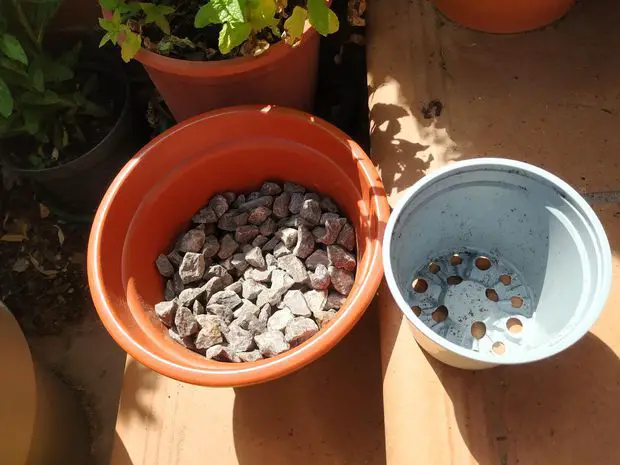
How big is too big? As far as the jasmine is concerned, there is no such thing as too big when it comes to pot size. But as with most things in life, there is a point of diminishing returns. Therefore, we do not need to worry if a pot is too big, we can use any large enough size or larger. It's just that at a certain level we will not see benefits and might as well use a smaller size for aesthetical reasons.
Two: Give support
Jasmines are vines and as such, they love to climb around some sort of support structure or lattice. That's true for jasmines in hedges and as well holds true for potted plants. It is therefore quite important, to include a support structure for a potted jasmine.
You can easily make your own inexpensive support structure using chicken wire. Take an appropriate length of at least the height of your plant and cut the chicken wire to length. Roll it into a cylinder of an appropriate diameter, so that it follows the outside perimeter of the pot. It can also be just half a cylinder or three quarters of one.
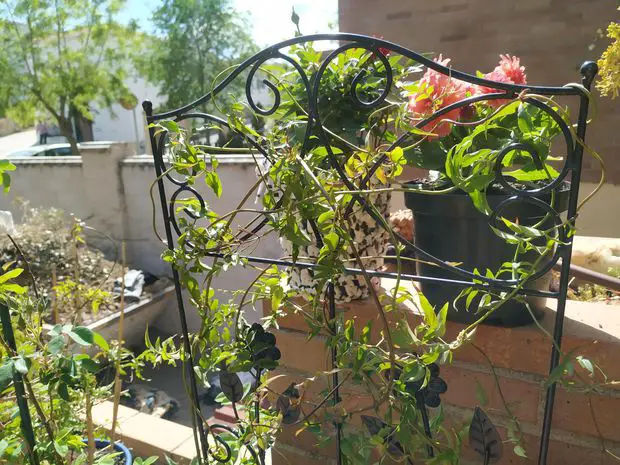
You can also head to your favorite gardening store to buy a commercial support if you want a quick and convenient solution, or order one online. Plant climbing supports come in many shapes and sizes. Pick one that you like of the right size for your jasmine.
Three: Allow proper draining
Jasmines love humid soil but do not like standing water. We want moist, not overly wet. Therefore, we need to make sure that our pots drain water well. That means, that we cannot just use any old bucket. We need holes in the pot. Plant pots come with holes of course and if there are a couple drainage holes in the pot, it is fit for purpose.
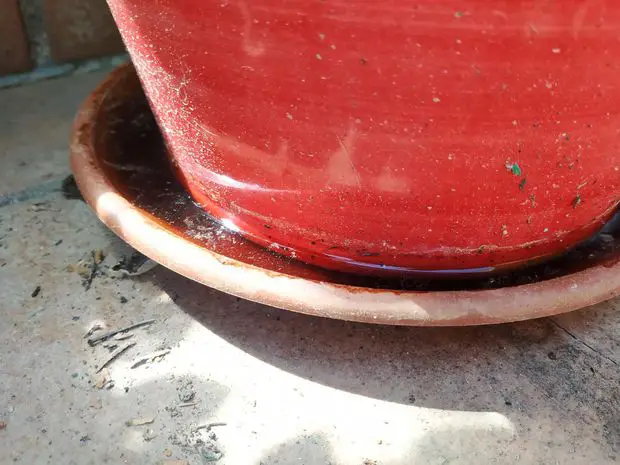
We can improve the drainage capabilities of our pots by using a layer of coarse gravel at the base underneath the soil. The layer should be one or two gravel diameters high (two is better than one) and the soil should then be just put on top of the gravel. That way, there's voids and cavities at the lower level of the pot and excess water will find a way to drain away.
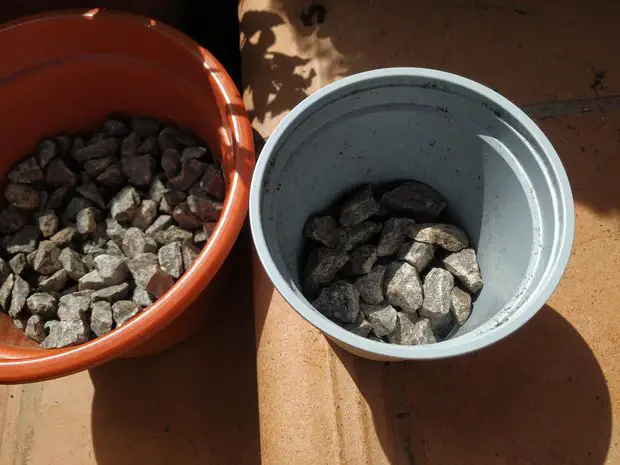
Good drainage is important, because over watering can cause a bunch of issues in our jasmine plants. The most problematic aspect of too much water for too long a time is root rot, which can cause a number of downstream symptoms such as brown leaves or curling leaves, amongst other.
Potted jasmine plants are especially at risk of root rot, because water can collect in pots, if drainage is hindered.
Quick tip: Insert a small mesh over the drainage holes. This mesh or net is commonly used in bonsai keeping to make sure the roots stay in the pot and do not grow out of it. What works for bonsai works well for jasmine plants too and makes our live easier when it is time to re-pot the plant, which is the next thing to keep in mind.
Four: Re-pot occasionally
The roots of the plant need enough space in the pot and to make sure that is the case, we should re-pot our potted jasmine plants occasionally. Re-potting accomplishes two things. First, it makes sure that there is enough room for the roots as mentioned, and second it increases the nutrients in the soil again.
Over time, the macro and micro nutrients in the soil deplete slowly and re-potting gives us the chance to change out the soil for fresh, nutrient rich soil. The end of winter is a good time to re-pot our plants. That way, we have fresh soil available for the growing season.
The best soil to use depends on your particular jasmine in question. For most species, using a loose soil is much preferred because of the good draining ability of such a soil. With that in mind, any nutrient rich commercially available plant soil works quite well. Make sure, the soil contains enough micro nutrients (also called trace elements).
Five: Proper fertilization
It is important, to supply jasmine plants with the required macro and micro nutrients in the appropriate amounts. That is especially true for potted plants because there is less space available for them to grow their roots outwards and down.
Moreover, the soil in pots depletes over time and that can cause a nutrient deficiency which can lead to all sorts of issues. We've written about numerous issues with our jasmine plants before all of which can have a nutrient deficiency component. To read more about it, you can follow the links below:
As you can see, proper fertilization is quite important. How much and using what? For a potted plant, regular application of a 7-9-5 fertilizer is a good starting point. The numbers abbreviate the percentages of the components. The seven means there's 7 percent nitrogen in it. Nine: 9 percent phosphorous and five: 5 percent potassium.
Good commercial formulations of 7-9-5 additionally include all 6 essential macro nutrients and all 10 essential micro nutrients for your jasmine's needs. We would use it depending on soil quality and pot size between once every two weeks with the watering and once every month or so.
It is also important to not overdo fertilization, because that can cause issues as well such as problems with flower formation. We've written about that here for Madagascar jasmines, but the problem holds true more generally for nearly all jasmine species.
Six: Choose a good location
Jasmine plants like between 4 and 6 hours of direct sunlight daily either preceded by or followed by shade for the rest of the day (or any combination thereof). It is therefore advisable, to choose a location for the potted jasmine that offers these light conditions.
If our plant is located indoors in our house or apartment, we should make sure that the window has these conditions covered and place it there. We can adjust the location down the line, if light conditions change with the seasons. A window that worked well in the winter might not be optimal in the summer or vice versa.
Seven: Water regularly
Jasmine plants love humid air and soil and do not like for the soil to dry out. Therefore, regular watering of a potted plant is important, especially because pots hold less water and dry out easier and more quickly than an otherwise permanently planted location would.
Over the Summer, watering schedules need to increase in freuqncey with rising temperatures to make sure there is always enough moisture in the soil. Once per day can be required, if weather conditions are hot and dry. Otherwise, every other day is a good rule of thumb, generally speaking.
If you experience your plant drying out for some reason, I have written detailed suggestions what can be done about it here to fix the issue.
Eight: Don't water excessively
Even though enough water is very important, too much water is bad. Jasmines like moisture, but not standing water. This factor ties in well with proper drainage of our pots.
With a good pot setup that drains well, we are halfway there. But in the case our pot is a bit lacking in that department, we need to still make sure not to overdo the watering process. I check my own potted jasmines every time I water them for two things:
- How quickly does the water move down the pot?
- Is there some standing water left after I am done watering?
If the water is moving slowly and/or I have standing water in my pots I know that it is time to improve draining or decrease watering.
Another thing that helps is using a moisture meter in the soil. These handy little gadgets let me know if the plant needs watering in the first place and also, form experience, roughly how much water i need to use. If you don't have a moisture meter and don't want to buy one, you can also stick your finger in the soil and find out that way, if there's enough moisture still. Over time, you will learn what moist soil feels like and when it is time to water.
Nine: The pot material does not matter
Can I use plastic pots for my potted jasmine? Does it need a clay pot? Yes to the first and no to the latter. Plastic pots can be used and clay is not required. Jasmines grow in both kinds of containers. Clay can certainly look much nicer and I prefer it for my plants but functionally, either material works well.
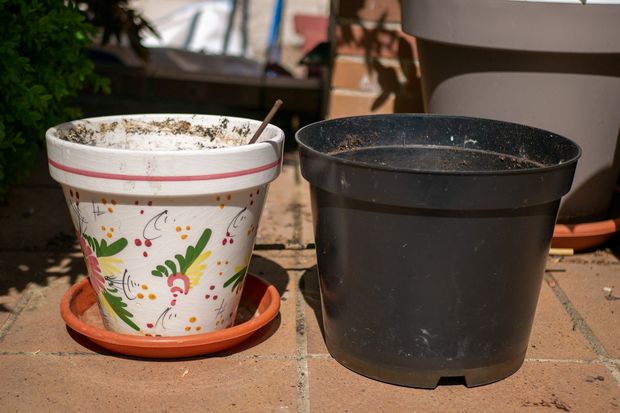
Ten: The shape is irrelevant too
Can I use a rectangular pot for my potted jasmine? Does it need to be round? Provided there is enough space around the roots in the pot, the shape of the pot does not matter. A rectangular footprint works as well as a round one.
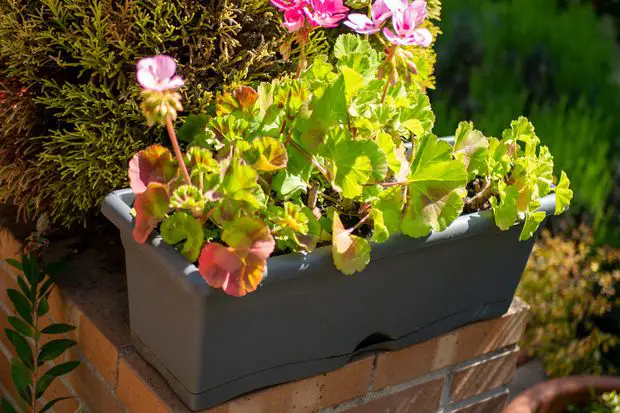
A slight issue might appear if we need to re-pot a plant that has been in a rectangular pot for a long time into a round pot. Insert that case, depending on the size, we might end up with a root ball that does not fit into the round pot in which case we need to up the size a bit more or prune the roots back a little. A bigger pot would be preferable over root pruning here.
That's it, you have reached the end and know everything there is to know about how to properly care for your potted jasmine plant. Thank you for stopping by.
